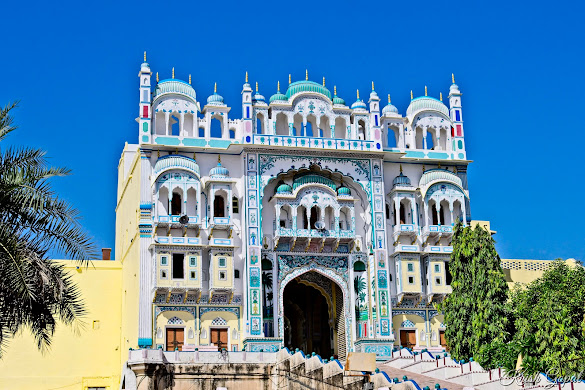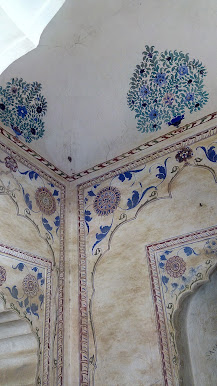

.jpg)
Tucked away at the foot of the Kana Pahar hill lies the serene Dargah of Kamruddin Shah, an enduring symbol of communal harmony and spiritual significance. Built in the mid-19th century, this sacred site honors Saint Kamruddin Shah, a revered Sufi saint born in 1784, whose legacy has inspired generations with its message of peace and unity. The dargah complex is more than just a tomb; it is a spiritual and cultural hub that includes a madrasa (Islamic school), a mosque, and a mehfilkhana (assembly hall). These structures stand as silent witnesses to the region’s rich history and interfaith traditions, making it a notable tourist attraction in Jhunjhunu, Rajasthan. A Journey Through Faith and Architecture The grand entrance gateway, accessible by a well-constructed ramp, leads visitors into the sacred complex. This gateway holds historical significance, having been erected in 1841 by Major Forster to mark the demise of his infant son. The architecture, while simple, resonates with deep symbolism. At the entrance, visitors are greeted by the Swastik symbol, a striking representation of Hindu-Muslim harmony, setting the tone for the unity that defines this dargah. The bond between Kamruddin Shah Baba and Baba Chanchal Nath, a saint revered in Hindu tradition, adds a mystical dimension to the shrine. Stories of their kinship are still recounted by locals, further highlighting the interfaith relationships that the dargah embodies. Tourism and Historical Importance The dargah has become a landmark of spiritual tourism, drawing visitors from all faiths who seek tranquility at this serene site. Pilgrims come to offer prayers, while history enthusiasts are drawn to the cultural significance and stories that the site encapsulates. The well-maintained complex serves as both a spiritual retreat and a historical monument, encapsulating the legacy of Sufi traditions in Rajasthan. A Spiritual Legacy Worth Exploring The Dargah of Kamruddin Shah is more than just a tomb—it is a sanctuary of love, unity, and peace, reflecting the harmonious coexistence of diverse faiths. The presence of both Islamic and Hindu symbols within the complex makes it a unique destination for pilgrims, historians, and tourists alike. Whether you seek spiritual solace or a deeper understanding of India’s pluralistic heritage, a visit to this dargah offers a profoundly enriching experience. Let the whispers of the past and the serenity of the present guide your footsteps as you explore this sacred site beneath the shadow of Kana Pahar Hill.